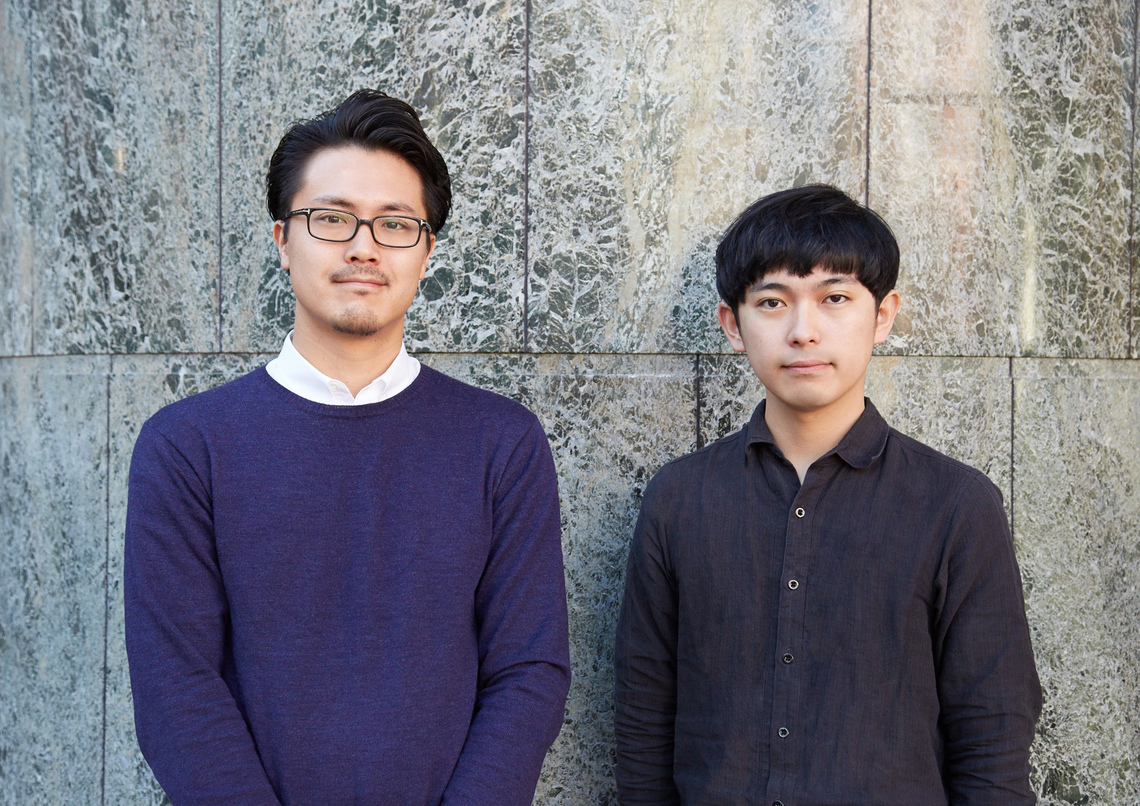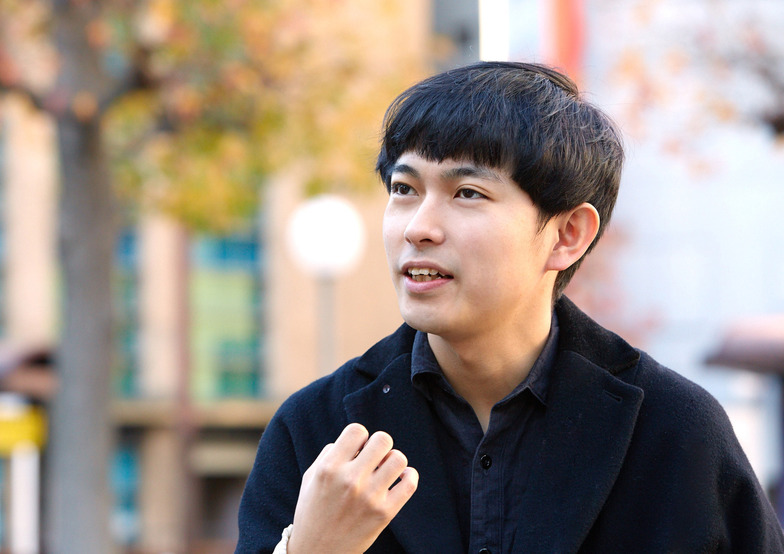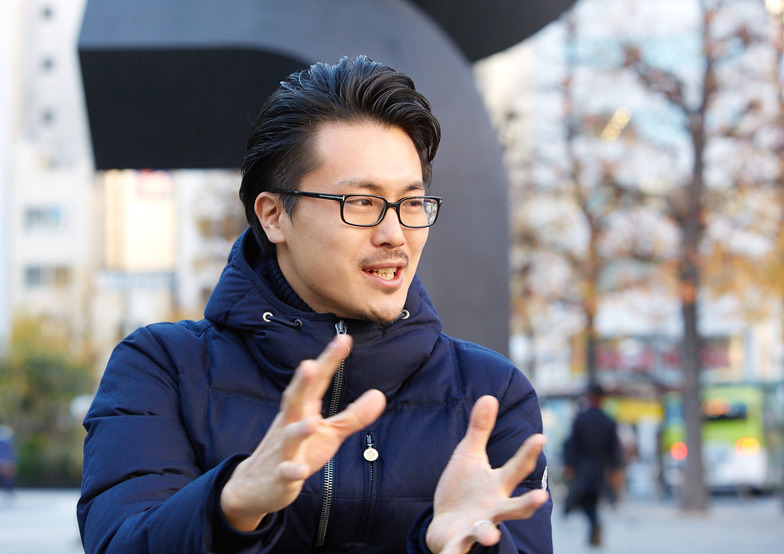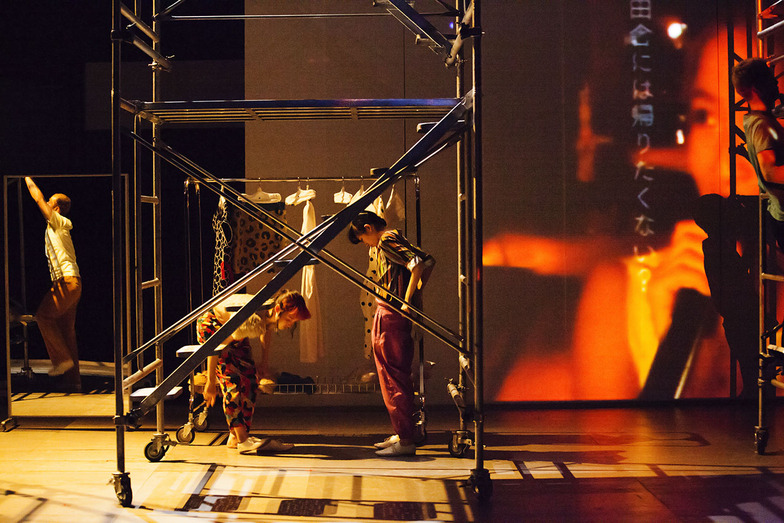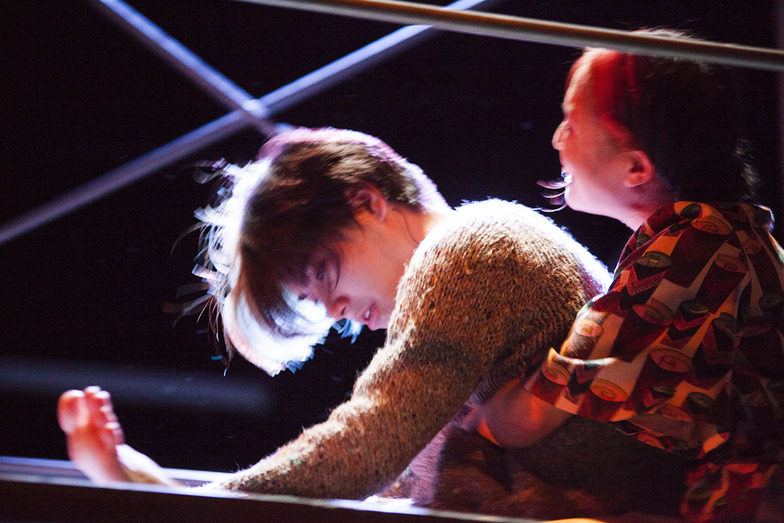The idea to launch "Mum and Gypsy" came from a small cafe on Yakushima Island
Takuya Fujita (hereafter Taku): Today, I'd like to learn from Mr. Fujita, who conveys messages through the medium of theater, about the know-how of telling stories to people. This might be a fundamental question, but among various expressive methods, why did you choose theater?
Takahiro Fujita (hereafter, Takahiro): I've been involved in theater since I was 10, starting as a child actor. For a long time, it felt like just another extracurricular activity—my daily life simply revolved around doing theater. Even after moving to Tokyo from Hokkaido and entering university, I lived solely for theater. It was just my default state. But around age 20, I decided to transition into being a creator.
When trying to establish myself within the very small category of theater, I naturally started thinking about how to operate theater and its possibilities—not just as an actor, the medium of the playwright, but as a playwright myself.
Theater is a medium where real people stand on stage, and audiences come to see them. While pondering what that really meant, I spent my time around age 20-21 intensely touring various cafes across Japan. Back then, it was a period when small cafes, often converted from old traditional houses, were dotted all over Japan and very popular.
On Yakushima, there was a cafe called "Sometimes You Can See the Waterfall," run by just a couple. And you really could see the waterfall sometimes, from the balcony. When I stayed on Yakushima, I went there every day to think. The things I pondered then connect to the current activities of the theater company "Mum and Gypsy."
That couple runs the cafe on Yakushima during the warm summer season, but normally they run a coffee bean shop in Kagoshima. Coming to Yakushima only during the summer to hand that coffee directly to customers—that act itself was incredibly intriguing. In a way, I thought this was also a form of spatial art. And what's more, it even had a proper title: "Sometimes You Can See the Waterfall."
Taku: So the shop's satisfaction level depends on the waterfall, right?
Taka: Exactly, it depends on the waterfall (laughs). I believe it's in Issou. I think it's now called "Issou Cafe," but back then it was the "Sometimes You Can See the Waterfall" cafe. That kind of "space creation" is what made me want to start something myself. It wasn't about wanting to convey some message to society through theater; the initial idea was simply, "I want to create a place where people come."
I founded "Mum and Gypsy" when I was 21. In the early days, we performed in a tiny old-style Japanese house café that could only seat about 10 to 15 people. It was a minimal setup—a space where I could completely oversee everything and establish my own world, while also genuinely serving the audience. The theater was just there, solitary.
I thought that might be more important than the content of the play itself. The experience of coming to the cafe might be worth the 2000 to 3000 yen ticket price. In my early twenties, I started creating these little setups here and there. Through that, I felt like I was acquiring my own world, along with the space itself.
Taku: Watching Fujita-san's theater, I found it incredibly interesting—borderless, in a way. Not just the absence of a border between stage and audience, but also how the border between fiction and nonfiction feels shaky and ambiguous.
While working at Village Vanguard, I tried casting books into space
Takashi: After that, I realized theater alone wouldn't pay the bills, so after graduating university at 22, I started working at Village Vanguard. I spent about three years there as a part-timer, and looking back, those were crucial years. They were three years of reading voraciously, but also of thinking very seriously about where to place which books.
It was like casting books onto the stage of the store. Another interesting thing about Village Vanguard is that they don't arrange books by author. It's like an association game. For example, if you place a book of tanka by Hiroshi Homura next to a book by Shuji Terayama, someone drawn to Terayama's tanka might pick up Homura's book too. Or if you place a picture book next to Homura, it connects to his work outside of tanka. That placement depends entirely on the bookseller. I learned from senior staff how far customers' interests might extend, where to place what, and what routes to guide them along. I had ample time to think deeply about it.
At that time, I thought it might be good for my own theater work to have various hooks too. I aimed to encourage impulse buys. I found it rather interesting that someone who came to see a play might leave having made a discovery unrelated to theater.
Take " Throw Away Your Books, Let's Go to the Streets," which Mr. Fujita saw. Someone might come because they like Terayama Shuji, or someone interested in Terayama might come and then think, "I want to buy that Mina Perhonen costume" on their way out. I think it's about how we create and closely observe the "audience dynamics." For example, the delicate balance of what percentage came specifically for the play itself, what percentage is interested in the clothes, and what percentage is only there for their favorite actor.
Theater tends to end up with only theater fans in the audience. But in Tokyo, there are probably fewer than 10,000 people who see four or more plays a month. I want to change the situation where we're just circulating that same group of less than 10,000 people.
If a woman who buys five dresses a year cuts back by one, and spends that saved money on theater tickets instead, I feel that act carries a meaning quite different from theater's past. Lately, I've been thinking I want to do work that targets that.

All photos above are from the production "Drop Your Books and Hit the Streets" performed at Tokyo Metropolitan Theatre (December 5-27, 2015)
Photography: Sayuki Inoue
*Continued in Part 2
<Performance Information>
"Goodbye, Night" "Before Dawn Breaks, Morning" "K and the Edge of Midnight"
Written and Directed by Takahiro Fujita
2016.Feb 11-28/Saitama Arts Theater Small Hall
http://www.saf.or.jp/arthall/stages/detail/3387
Challenge Fukushima Performing Arts Project! "Timeline"
2016.3.26 Sat/Fukushima Prefectural Cultural Center (Fukushima City, Fukushima Prefecture)
Written and Directed by Takahiro Fujita / Music by Yoshihide Otomo / Photography by Naoki Ishikawa / Choreography by Kona Sakai
Performed by: Fukushima Prefecture Middle and High School Students Organized by: Fukushima Prefecture
http://www.fukushima-performingarts.jp
LUMINE0 Opening Event: Simultaneous Performance of Three Repertoire Works
2016.4.28 Thu - 5.8 Sun / LUMINE0
"Different Shapes" 2016.4.28 Thu – 4.30 Sat
"Akkono Hanashi" May 2, 2016 (Mon) – May 4 (Wed)
"A line connecting dots. A three-dimensional form made of them. Within it, contained, many different worlds. And about light." 2016.5.6 Fri – 5.8 Sun
http://mum-gypsy.com




